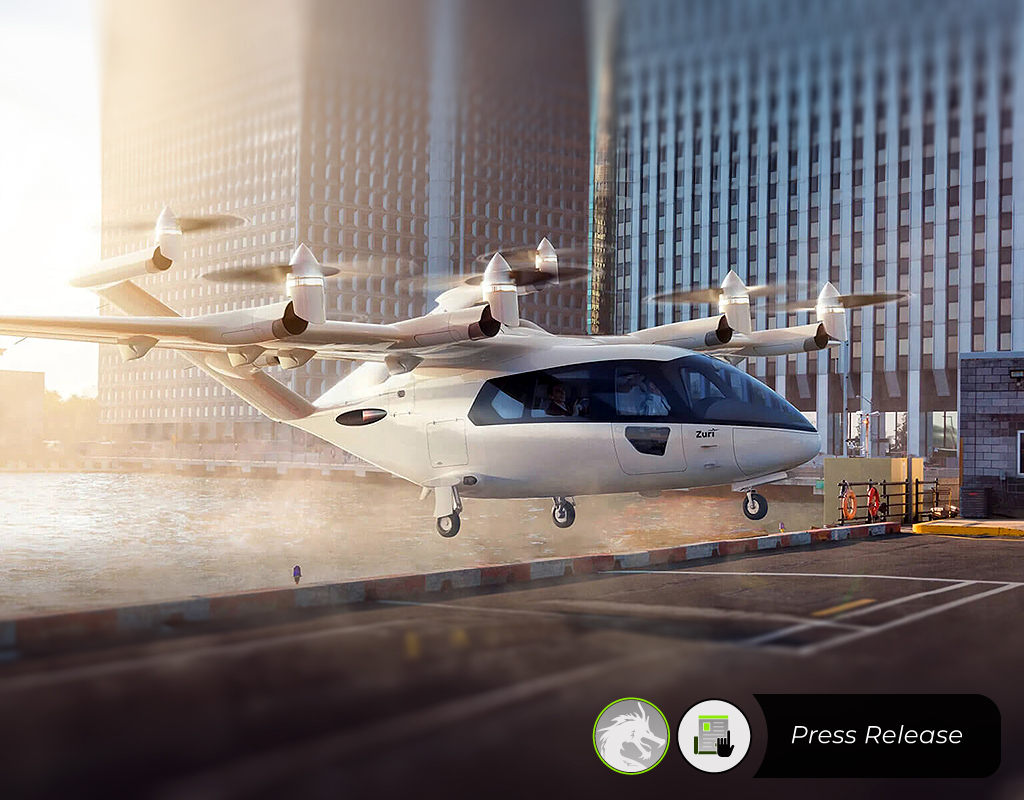
Zuri, an innovator in the aviation industry, continues its work on the development of a revolutionary hybrid five-seat vertical take-off and landing (VTOL) aircraft.
At the Aero Friedrichshafen airshow, it will present a fundamental development shift: Skeleton — a large-scale ground testbed, which will be used for testing ergonomics and all the electronics — the avionics, flight control, power and signal cabling and the hybrid propulsion system for the upcoming next-gen demonstrator.
When building the Skeleton, the Zuri team used both experience and knowledge from flight tests of the 11-meter demonstrator Zuri 1.0, as well as from more than ten scaled models developed and flight tested.
To demonstrate the size and shape of the planned next-gen demonstrator, the designers used several materials to build the “Skeleton” testbed: mainly carbon composite boards, 3D printed parts, plywood and metal.
“Zuri’s main competitive advantage is its hybrid powertrain allowing us to fly 700 kilometers even with a mandatory reserve,” said founder and CEO Michal Illich, “The engine powering the generator will burn SAF, achieving extremely low emissions. We won’t be dependent only on batteries, which make VTOL aircraft only a kind of ‘city taxis’ that can only make about 20-minute jumps.”
The five-seater Zuri with a maximum flight time of approximately two hours (plus mandatory safety reserve) will bring a real revolution in regional transport.
The Zuri team has a lot of experience with flight tests of the 11-meter demonstrator Zuri 1.0.
“It turned out that testing in real conditions is still an important part of development, despite the development of computing options and simulations,” said Jakub Polesny, designer of Zuri. “The skeleton with wingspan of eight meters represents the full size of the next-gen demonstrator we are preparing.”
The Testbed Skeleton should help to further accelerate the development of the unique Zuri aircraft, which, thanks to its eight tilting engines, can take off vertically like a helicopter.
However, the forward flight will be fundamentally more economical thanks to the wings, which makes it an attractive means of transport for both personal travel, cargo transport and rescue and observation missions.
Zuri came up with the tilting of the motors as the most effective solution thanks to its own development. At the same time, the original concept in 2017 counted on engines on pylons and the use of a thrust propeller.
“The aerodynamic advantages of tilting the motors were also shown in our last test drone with a three-and-half-meter span,” Polesny said, recalling the recent and successful first flight of the new generation of the Zuri V1NG drone.
“Although the drones were originally supposed to serve only as flying development prototypes, we are hearing from interested parties who would be interested in their practical use,” added Illich.
The Skeleton, intended especially for expert investors, will not be the only attraction of Zuri in Friedrichsfen. At its stand in the middle of hall A7, the startup will once again offer the flight simulator VR (1+4), which premiered at last year’s exhibition.
“As far as I know we are the only company which can offer virtual reality experience for the pilot in a real flight simulator and four passengers at the same time. Those interested in the flight stood in long queues. We also had success in London, Dubai or Washington with similar presentations,” said Illich.

